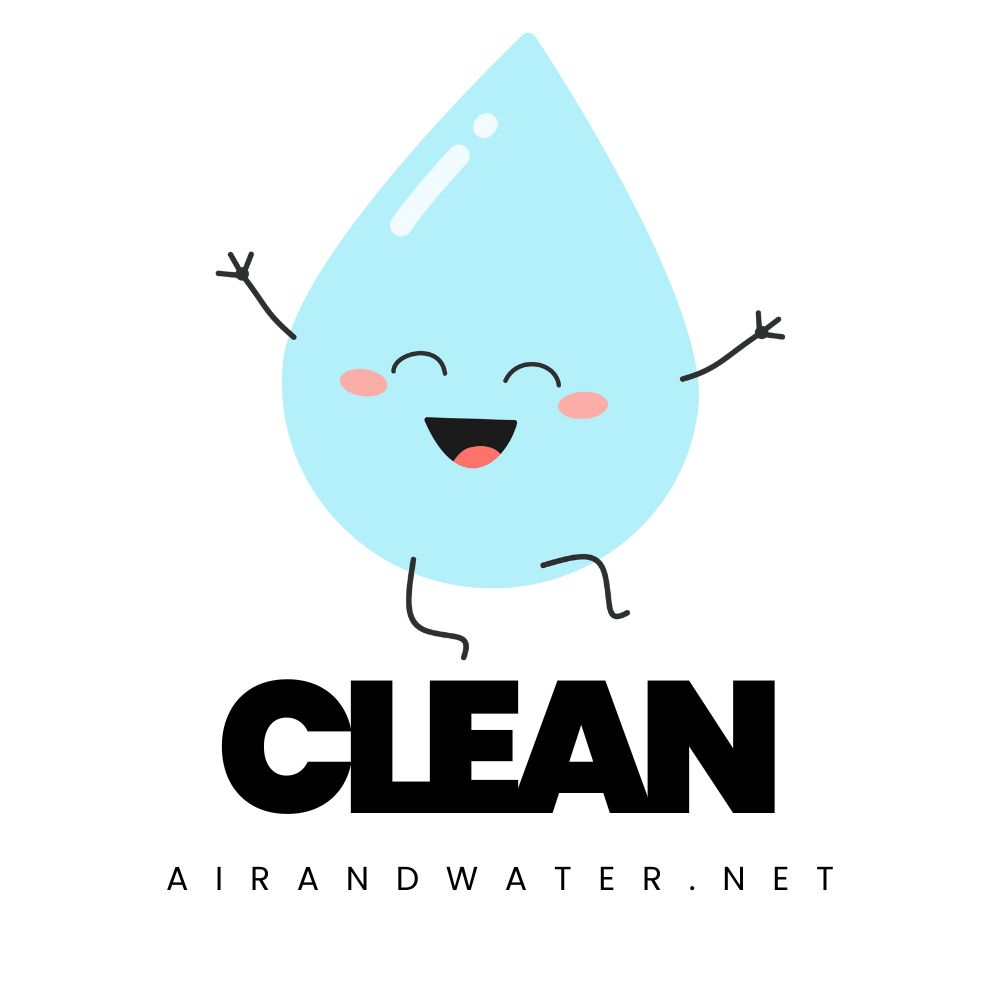Newark Water Quality at a Glance
PFAS concerns remain
Is Newark Water Safe to Drink?
Major Progress Made, But Vigilance Required – Newark has successfully addressed its lead crisis, with current lead levels at 0 parts per billion, well below EPA thresholds. However, PFAS contamination affects all 300,000+ residents, with 11 contaminants exceeding health guidelines as of 2021. The city has joined class-action lawsuits against PFAS polluters and continues water quality improvements, but residents should remain informed about ongoing testing and consider filtration for PFAS removal.
⚠️ Key Concerns for Newark Residents
- PFAS “Forever Chemicals”: 11 contaminants including PFAS exceeded health guidelines in 2021; ongoing lawsuits against polluters like 3M and DuPont
- Lead Service Line Fraud: JAS Group Enterprise falsified reports for 1,500 properties in 2024, receiving $10 million for work not performed
- Historical Contamination: 2017-2019 lead crisis made Newark among U.S. cities with worst water quality during that period
- PFAS Sources: Military firefighting foam from Dover Air Force Base contaminated groundwater; widespread industrial pollution in Newark Basin
Read the full report below for detailed analysis, city-specific data, and actionable recommendations for Newark residents.
Newark – New Jersey – Water Quality Report 2025: PFAS Testing, Infrastructure Concerns & Safety across your city
Newark’s Department of Water and Sewer Utilities serves approximately 300,000 residents across Newark and sells water to surrounding communities including Belleville, Bloomfield, East Orange, Nutley, and South Orange. The utility manages over 500 miles of water mains, operates the Pequannock and Wanaque Water Treatment Plants, and delivers roughly 80 million gallons daily across this historic northeastern urban center.
Newark draws its drinking water from two primary sources: the Pequannock Watershed, a protected 35,000-acre forest reservoir system in northern New Jersey that has served the city since the 1890s, and the Wanaque Reservoir, operated by the North Jersey District Water Supply Commission. With average annual rainfall of approximately 47 inches, Newark benefits from reliable precipitation but faces the infrastructure challenges common to many older American cities. The city has undertaken unprecedented water system modernization since 2019, implementing a lead service line replacement program that successfully replaced over 23,000 lead service lines in under three years – one of the fastest such programs in American history. Newark’s transformation of its water system serves as a national model for addressing lead concerns through comprehensive community engagement, innovative financing, and efficient implementation in this densely populated urban environment.
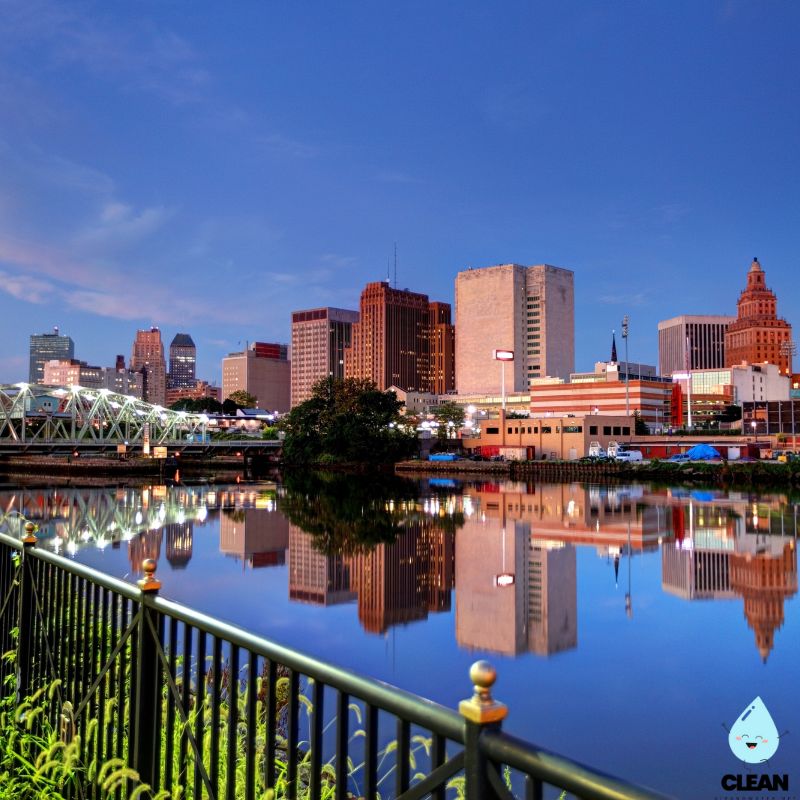
Newark Water Quality: Current Status (2024-2025)
Latest Testing Results
- Lead Levels: The latest testing results show 0 parts per billion (ppb), well below the EPA action level of 15 ppb (newly reduced to 10 ppb effective 2027), reflecting the success of Newark’s comprehensive lead service line replacement program substantially completed by 2022, though some remediation work continues following discovery of contractor fraud.
- Testing Scope: Newark conducts over 60,000 water quality tests annually, with enhanced lead monitoring at over 100 sampling sites across all service areas to ensure effective corrosion control.
- Compliance Status: Newark’s water meets all federal and state drinking water standards, maintaining compliance with EPA and New Jersey Department of Environmental Protection regulations following significant system improvements.
Reservoir-Based Water Supply
- Pequannock Watershed: Primary source for western and central Newark, consisting of five interconnected reservoirs in a protected forest watershed in Morris and Passaic Counties.
- Wanaque Reservoir: Primary source for northern and eastern Newark, part of the North Jersey District Water Supply Commission system serving multiple municipalities in the region.
- Watershed Protection: Comprehensive source water protection programs including forest management, wildlife monitoring, and development restrictions in watershed areas.
Treatment Excellence
- Pequannock Water Treatment Plant: Recently upgraded facility utilizing coagulation, sedimentation, filtration, and disinfection, with enhanced corrosion control using zinc orthophosphate.
- Wanaque Treatment: Water from the Wanaque system receives comprehensive treatment at facilities operated by the North Jersey District Water Supply Commission, with additional monitoring and quality control at Newark distribution points.
- Corrosion Control Optimization: Implementation of advanced corrosion control treatment using zinc orthophosphate, with continuous monitoring to maintain optimal dosing and water chemistry throughout the distribution system.
Infrastructure Transformation and Recent Challenges
- Lead Service Line Replacement: Landmark program substantially completed by 2022 that replaced over 23,000 lead service lines throughout the city in under three years, at no cost to residents. However, in October 2024, federal prosecutors charged JAS Group Enterprise Inc. with fraud for allegedly leaving lead pipes in place at approximately 1,500 sites while falsely claiming completion and collecting over $10 million in payments.
- Ongoing Remediation: Following discovery of the contractor fraud, Newark and the New Jersey Department of Environmental Protection launched comprehensive audits. By August 2024, targeted inspections of 388 sites found 30 properties with remaining lead components, which were immediately replaced.
- Water Main Renewal: Ongoing program replacing aging water mains, with priority for areas with histories of water main breaks or water quality concerns.
- Advanced Metering Infrastructure: Citywide implementation of smart meters with leak detection capabilities and real-time consumption monitoring.
Urban Resilience Planning
Newark has developed a comprehensive water infrastructure resilience strategy addressing the challenges of climate change and aging infrastructure. The city’s “Water System Resilience Plan” and “Climate Adaptation Strategy” include measures to harden critical facilities against flooding and power outages, establish redundant supply connections, and improve emergency response capabilities. Newark is implementing green infrastructure throughout the city to manage stormwater, reduce combined sewer overflows, and improve overall system resilience. The utility has established enhanced cybersecurity protocols to protect critical control systems from emerging threats. Newark’s integrated planning approach now balances immediate infrastructure needs with long-term sustainability, incorporating renewable energy at treatment facilities, implementing water conservation programs, and planning for future climate impacts on water supplies. The city’s forward-looking water governance model emphasizes transparency, environmental justice, and equitable service delivery across all neighborhoods of this diverse urban center.
Recommendations for Newark Residents
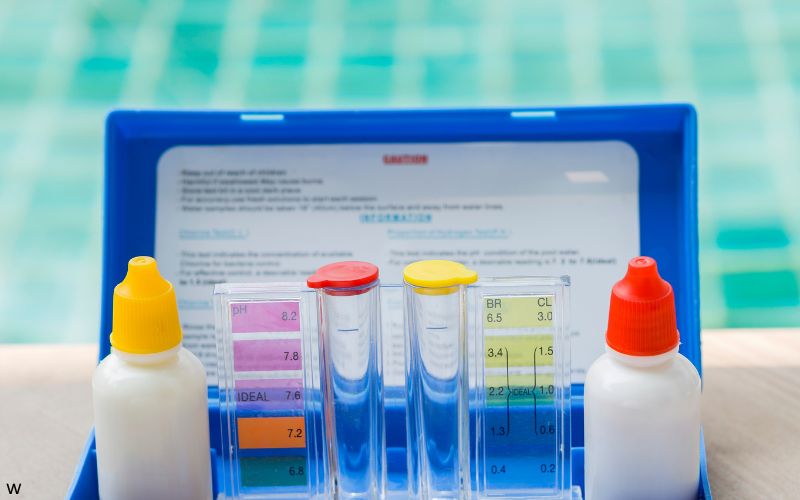
Request Water Testing
Newark residents can request free water quality testing by calling (973) 733-6303 or emailing waterandsewer@ci.newark.nj.us. Although most lead service lines have been replaced, testing is still recommended for homes built before 1986 with potential lead plumbing components, particularly given the recent discovery of incomplete replacements at some properties.
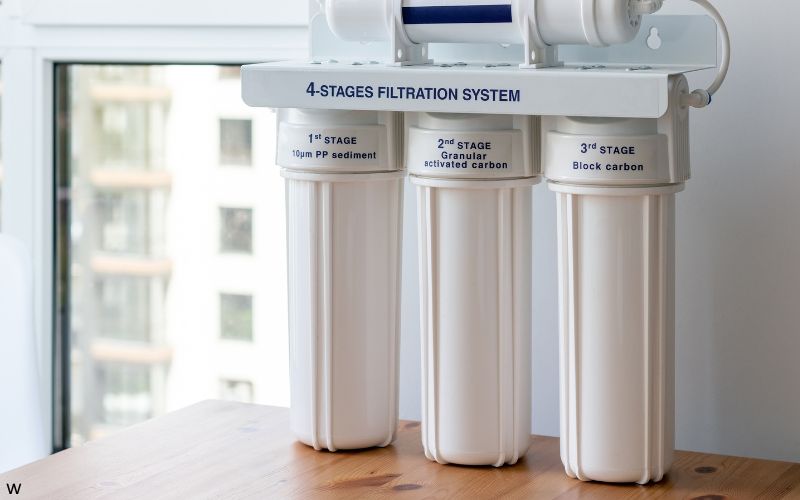
Consider Home Filtration
While Newark’s water meets all health standards, residents concerned about older interior plumbing or potential PFAS contamination may benefit from NSF-certified filters (Standard 53 for lead reduction and Standard 401 for PFAS reduction). Filters are particularly important in buildings where lead service line replacement is recent and system stabilization is ongoing.

Practice Conservation
Participate in Newark’s water conservation initiatives including free water-saving fixtures and leak detection assistance. Even in water-rich New Jersey, conservation helps reduce energy use, treatment costs, and utility bills while supporting sustainable water management.
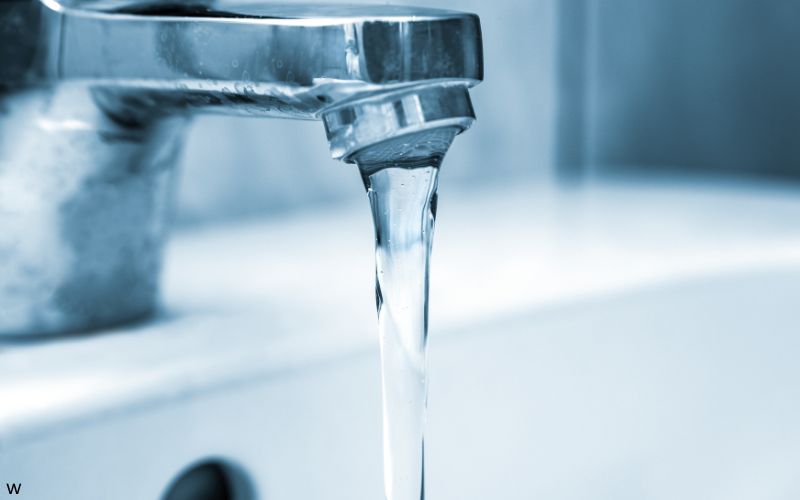
Flush After Extended Absence
If your home has been vacant for more than six hours, run cold water for 3-5 minutes before using for drinking or cooking. This helps flush water that may have been in contact with plumbing materials and ensures you’re getting fresh water from the main line.

Report Water Issues
Report water main breaks, water quality concerns, or pressure problems immediately through the Newark Connect app or by calling (973) 733-3654. With ongoing infrastructure improvements, promptly reporting issues helps maintain system integrity and water quality.
Quality News About Your Water
Get the comprehensive water quality news coverage you need with our dedicated US Water News Service. From coast to coast, we deliver in-depth reporting and expert analysis on PFAS contamination, EPA regulatory changes, infrastructure developments, and emerging water safety issues affecting communities nationwide. While mainstream media only covers the biggest stories, we provide the detailed, ongoing coverage that helps you understand the full scope of America’s water challenges. Whether you’re a concerned citizen, water professional, or community leader, our daily updates and analytical insights keep you informed about the issues that matter most to public health and environmental safety.
Frequently Asked Questions
Is Newark’s tap water safe to drink?
Yes, Newark’s tap water is safe to drink and meets all federal and state water quality standards. Following concerns about lead levels in 2017-2019, the city implemented one of the most aggressive and successful lead service line replacement programs in American history, replacing over 23,000 lead service lines throughout the city.
Newark has also optimized its corrosion control treatment using zinc orthophosphate, which creates a protective coating inside pipes to prevent lead from leaching into water. Regular testing shows that lead levels have decreased significantly with the latest results showing 0 parts per billion.
However, in October 2024, federal prosecutors charged one contractor (JAS Group Enterprise) with fraud for allegedly leaving lead pipes in place at some sites. Newark has conducted comprehensive inspections and replaced any remaining lead components found during these audits. Current water quality reports are available at water.newarknj.gov, and residents can request free water testing by calling (973) 733-6303.
How did Newark replace all its lead service lines so quickly?
Newark’s unprecedented lead service line replacement program succeeded through several innovative approaches:
• Landmark legislation: New Jersey passed a law allowing Newark to replace lead service lines on private property without owner consent, removing a major barrier
• Innovative financing: The program secured $120 million through the Essex County Improvement Authority, allowing replacements at no cost to residents
• Community outreach: Extensive multilingual engagement built trust and facilitated access to properties
• Efficient implementation: Multiple contractors worked simultaneously across the city, completing up to 120 replacements daily
• Streamlined process: Simplified approvals and standardized procedures reduced bureaucratic delays
• Data-driven approach: Comprehensive mapping and inventory of service lines guided efficient deployment of resources
This coordinated effort allowed Newark to complete what would typically be a 10-year program in under three years, setting a national model for addressing lead in drinking water. However, the discovery of contractor fraud in 2024 highlighted the importance of ongoing oversight and verification.
What is the difference between the Pequannock and Wanaque water systems?
Newark receives water from two distinct supply systems with different characteristics:
Pequannock Water Supply
• Source: Five interconnected reservoirs in a 35,000-acre protected watershed in Morris and Passaic Counties
• Treatment: Newark-owned and operated Pequannock Water Treatment Plant using coagulation, sedimentation, filtration, and disinfection
• Service Area: Western and central sections of Newark (approximately 60% of the city)
• Characteristics: Typically softer water with lower mineral content
Wanaque Water Supply
• Source: Wanaque Reservoir and Monksville Reservoir operated by the North Jersey District Water Supply Commission
• Treatment: Processed at regional facilities operated by the Commission before delivery to Newark
• Service Area: Northern and eastern sections of Newark (approximately 40% of the city)
• Characteristics: Generally harder water with higher mineral content
Both systems deliver safe, high-quality drinking water that meets all regulatory standards, though residents may notice slight differences in taste and hardness between the two sources.
What additional water system improvements is Newark implementing?
Beyond the landmark lead service line replacement program, Newark continues to modernize its water infrastructure:
• Water Main Renewal: Systematic replacement of aging water mains, with over 15 miles replaced since 2022 and plans for 5-7 miles annually moving forward
• Treatment Plant Upgrades: $22 million in Water Bank Loans awarded in March 2025 for Pequannock Water Treatment Plant modernization including new filters, chemical feed systems, and monitoring technology
• Reservoir Improvements: Ongoing investment in dam safety, intake structures, and watershed protection across the Pequannock system
• Smart Water Network: Implementation of advanced metering infrastructure, pressure sensors, and water quality monitoring throughout the distribution system
• Cyber Security: Enhanced protection of operational technology and control systems against emerging threats
• Green Infrastructure: Integration of stormwater management solutions to reduce combined sewer overflows and protect water quality
• Ongoing Verification: Comprehensive auditing and inspection of previously replaced service lines to ensure quality and address any remaining concerns from the contractor fraud case
These investments are funded through a combination of bonds, federal and state grants, and low-interest loans from the New Jersey Infrastructure Bank.
Contaminants of Concern

Lead
Source: Previously from lead service lines (most now replaced), but may still be present in older interior plumbing components including fixtures, solder, and pipes in homes built before 1986. Recent contractor fraud case revealed some incomplete replacements that have since been remediated.
Health Effects: Developmental delays in children, reduced IQ, learning difficulties, kidney problems, cardiovascular effects in adults, particularly concerning for pregnant women and children under six
Current Status: Latest testing results show 0 ppb, well below the EPA action level of 15 ppb (reduced to 10 ppb effective 2027), following citywide lead service line replacement and optimized corrosion control treatment
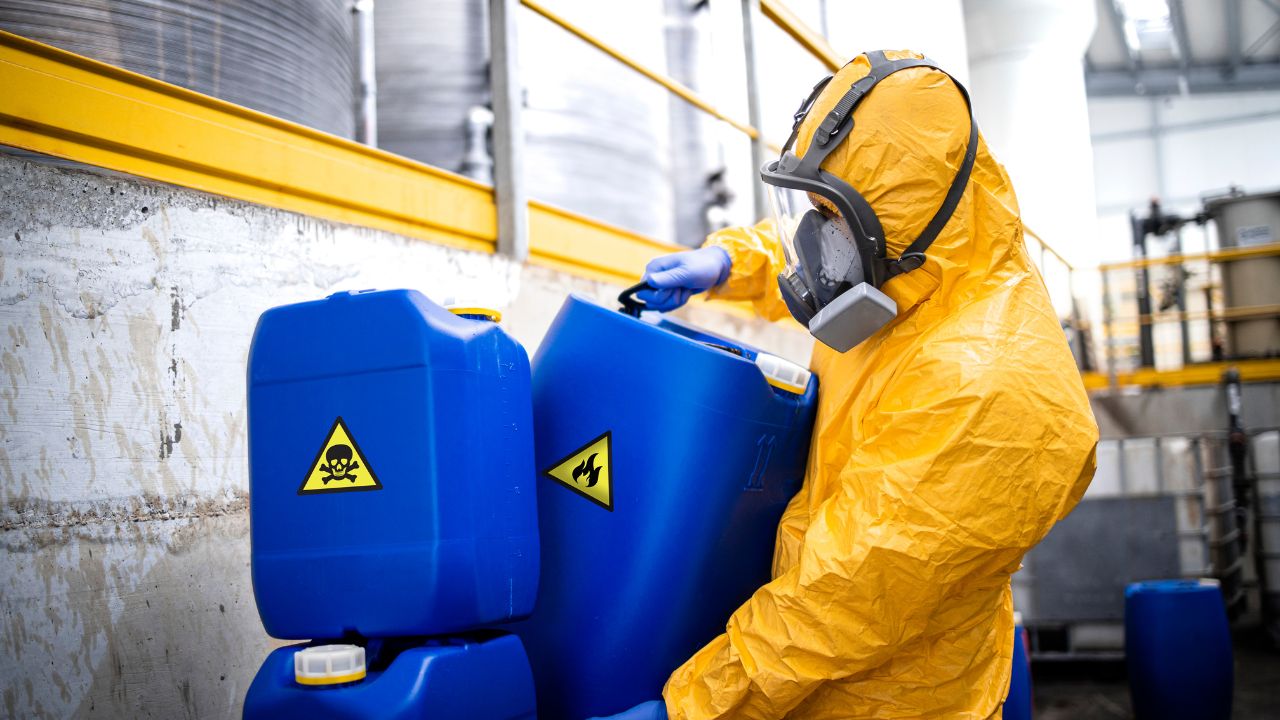
Haloacetic Acids (HAA5)
Source: Formed when chlorine disinfectants react with naturally occurring organic matter in the water supply; levels can vary seasonally with changes in source water quality
Health Effects: Long-term exposure to elevated levels may increase risk of certain cancers and reproductive effects; short-term exposure is not considered an immediate health concern
Current Levels: Location-based quarterly monitoring shows HAA5 levels averaging 32 parts per billion in the Pequannock system and 38 parts per billion in the Wanaque system EPA Limit: 60 parts per billion as a locational running annual average

PFAS (Forever Chemicals)
Source: Per- and polyfluoroalkyl substances from industrial activities, firefighting foams, and consumer products that have contaminated groundwater sources including the Newark Basin aquifer system
Health Effects: Linked to increased risk of certain cancers, liver disease, thyroid disease, high cholesterol, decreased fertility, weakened immune system, and developmental effects in infants and children
Current Status: Newark water has tested positive for PFAS contamination. In 2023, Newark joined class-action lawsuits against companies responsible for PFAS contamination. EPA established maximum contaminant levels of 4 parts per trillion for PFOA and PFOS, with compliance required by 2027, though recent EPA policy changes may affect enforcement timelines.
Important Note on Recent Developments:
In October 2024, federal prosecutors charged JAS Group Enterprise Inc. and its executives with conspiracy to commit wire fraud for allegedly leaving lead pipes in place at approximately 1,500 Newark properties while falsely claiming completion and collecting over $10 million in payments. Newark has since conducted comprehensive audits and replaced any remaining lead components discovered during inspections. Residents can verify their service line status and request testing through the city’s water department.
Despite this setback, Newark’s overall lead service line replacement program remains a national model for rapid, comprehensive infrastructure improvement. The city continues to prioritize water quality monitoring and transparent reporting to maintain public trust and ensure safe drinking water for all residents.
Please read – our information
The information presented on cleanairandwater.net is compiled from official water quality reports, trusted news sources, government websites, and public health resources. While we strive for accuracy and thoroughness in our presentations, we are not scientists, engineers, or qualified water quality professionals.
Our mission is to present water quality information in an accessible, real-world format that helps people understand what’s in their water and make informed decisions about their health and safety. We believe that complex environmental information should be available to everyone in a format that’s easy to understand.
We make every effort to ensure our content is current and accurate, but we cannot guarantee that all information is complete or error-free. This website should not replace official communications from your local water utility or health department. We always recommend consulting official sources for the most up-to-date information regarding your specific water system.
Clean Air and Water is not liable for any unintentional errors, omissions, or outdated information. The content on this site is provided for informational purposes only and should not be considered professional advice.
